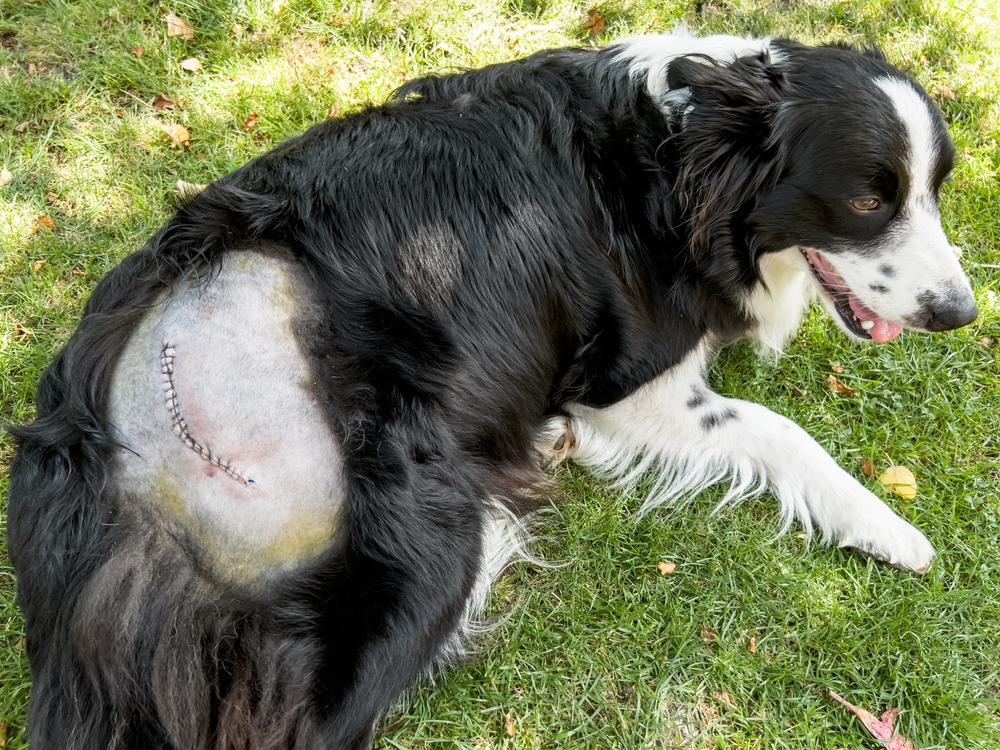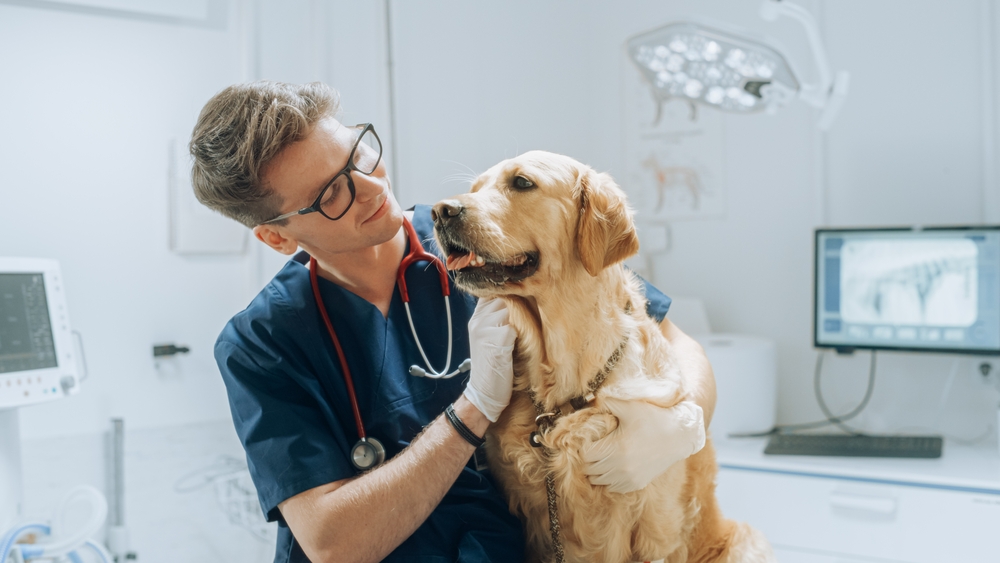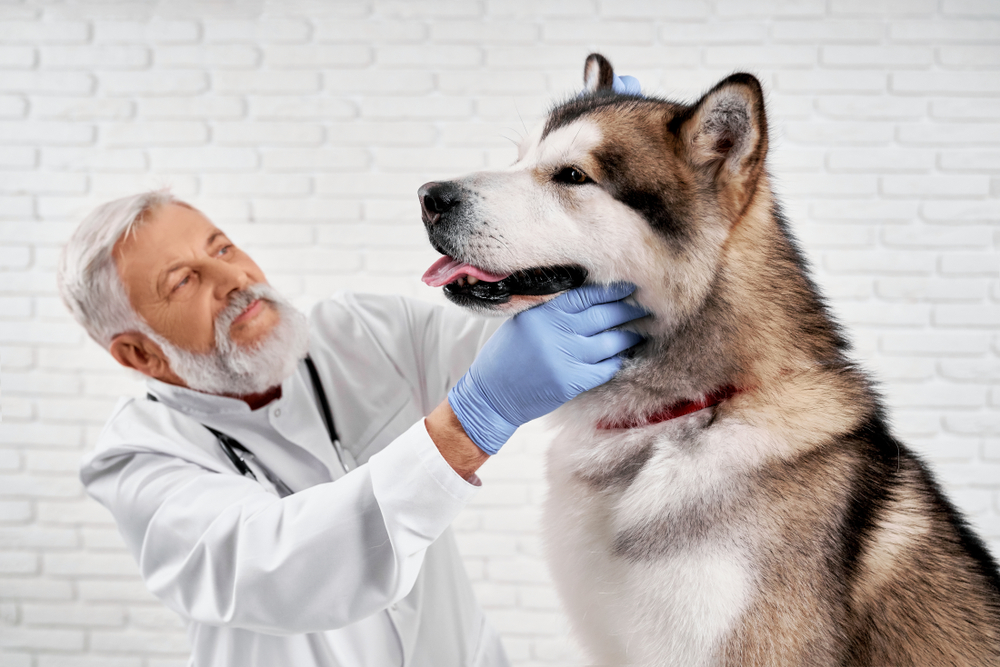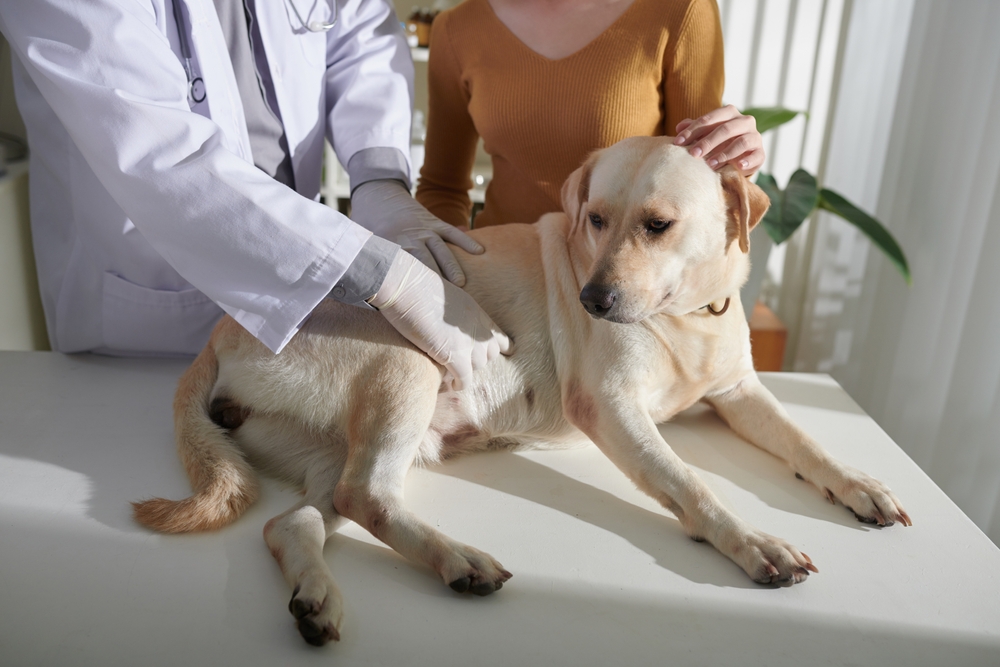[ad_1]
Whenever you carry your pet residence from surgical procedure, it’s regular to have worries, questions, and issues about find out how to take care of them whereas they get well. One facet of post-operative care is keeping track of their stitches, so it helps to know precisely what you’ll want to be looking for.
The next is a basic information to the dos and don’ts of post-operative wound administration, together with the fundamentals of day-to-day care, and when to name your vet.


Phases of Wound Therapeutic
Whether or not it’s an damage or a surgical reduce, the pores and skin goes via the identical fundamental levels of therapeutic. How lengthy that therapeutic takes can be depending on quite a lot of elements, together with:
- The dimensions of the wound
- The form of the wound
- The depth of the wound
- The placement of the wound
- The cleanliness of the wound
- Disruption to wound therapeutic
- The well being of the person
For instance:
| Cat Castration Wound | Canine Chunk Wound over Knee |
|
|
| Wound heals in 3-7 days | Wound heals in 7-21 days (or extra) |
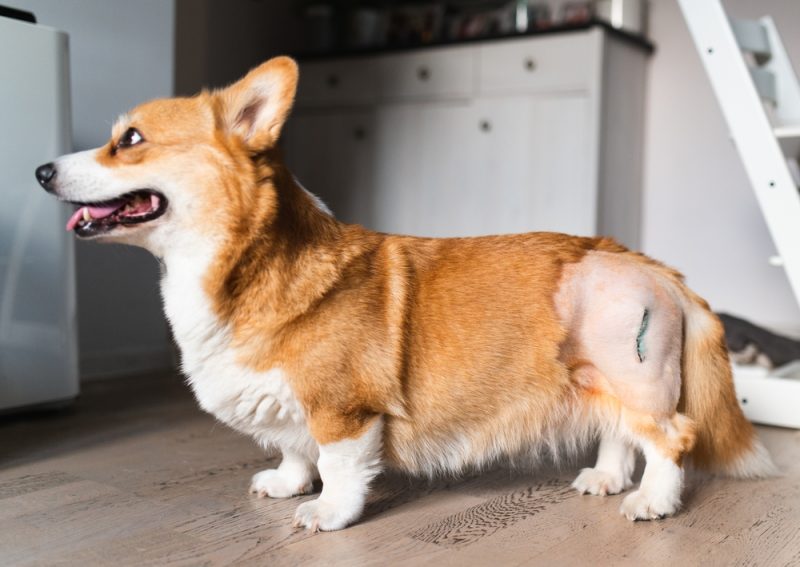

Regardless of the kind of wound we’re coping with, all full-thickness pores and skin wounds undergo the next three levels of therapeutic:
1. Irritation
Blood vessels initially constrict to regulate bleeding, however then dilate to permit white blood cells (eg. neutrophils, macrophages) emigrate to the realm to cope with any micro organism, broken tissue, or contamination—that is when wounds change into swollen and infected. If there may be lots of micro organism or contamination, extra white cells are recruited, leading to pus. In clear, sterile surgical wounds, this section needs to be minimal.
2. Proliferation
In a wholesome wound, fibroblasts (the cells concerned in forming connective tissues) and capillaries (tiny blood vessels) come into the realm to kind a scaffold for different cells to develop over and fill in any lacking or broken tissues. The proliferation stage can take as little as 48 hours in a surgically closed incision. In wounds which can be left open, the scaffold, referred to as granulation tissue, must fill the wound earlier than new pores and skin cells (epithelial cells) can develop excessive.
3. Transforming
Scar formation: new collagen fibers are laid down alongside strains of rigidity to offer energy to the newly fashioned pores and skin. In massive wounds, this course of can take as much as 2 years, and the scar tissue will at all times be a little bit weaker than the unique pores and skin.


Completely different Varieties of Wound Closure
Relying on the kind of surgical procedure, wound location, incision measurement, and the surgeon’s choice, your canine could go residence with nylon pores and skin sutures, intradermal pores and skin sutures (dissolvable sutures throughout the pores and skin layer as an alternative of on the surface of the pores and skin), pores and skin staples, and even tissue glue.
The kind of wound closure shouldn’t have a major impression on how the wound heals, however some canine can be extra delicate to sure suture supplies. Crucial factor is to maintain an in depth eye on the wound and get in touch with your vet in case you discover something that doesn’t look proper.
💛 🐶 Converse To a Vet On-line From the Consolation of Your Sofa!
If you’ll want to converse with a vet however can’t get to 1, head over to PangoVet. It’s an internet service the place you’ll be able to speak to a vet on-line and get the personalised recommendation you want on your pet — all at an inexpensive worth!
Execs and Cons of Maintaining Wounds Coated
You might need assumed that every one wounds could be lined after surgical procedure, however that’s not at all times the case. For starters, it’s not at all times simple to use a dressing or bandage to sure elements of your canine’s physique, and generally, we wish to have the ability to see the wound on a regular basis. Listed below are some execs and cons of masking a wound:
Execs
- Safety in opposition to contamination
- Safety in opposition to abrasion
- Added layer of safety from scratching or licking
Cons
- We could not instantly discover bleeding/swelling/redness
- Wound coverings/bandages can result in pyoderma
- Canine are sometimes extra bothered by a wound dressing than by the wound itself
How To Examine Your Canine’s Wound
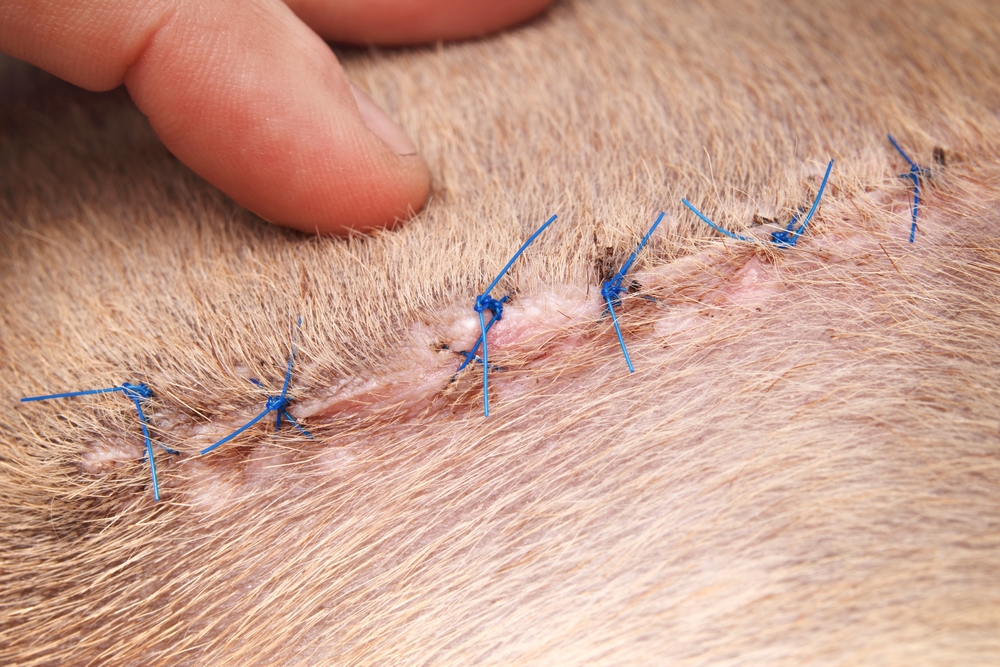

Your vet will go over all of the issues you’ll want to do to assist your canine get well from their surgical procedure, as every case can be totally different, relying on the person pet and the kind of surgical procedure they’ve had. Some canine will go residence with a dressing or bandage over the wound, whereas others can be left open. Relying on the situation of the surgical wound, your canine could also be required to put on a surgical swimsuit or e-collar. You will need to depart this in place, notably in a single day or if you end up out, as a canine can do a LOT of injury to a wound in a really quick interval when left unsupervised. If you’re struggling to maintain a collar or swimsuit in your pet, speak to your vet about some alternate options. You would possibly even wish to style a customized collar at residence!
Let’s discuss what a clear, surgical wound ought to appear like at totally different levels of therapeutic, and what you’ll want to be looking out (BOLO) for.
Day 1-3: Irritation
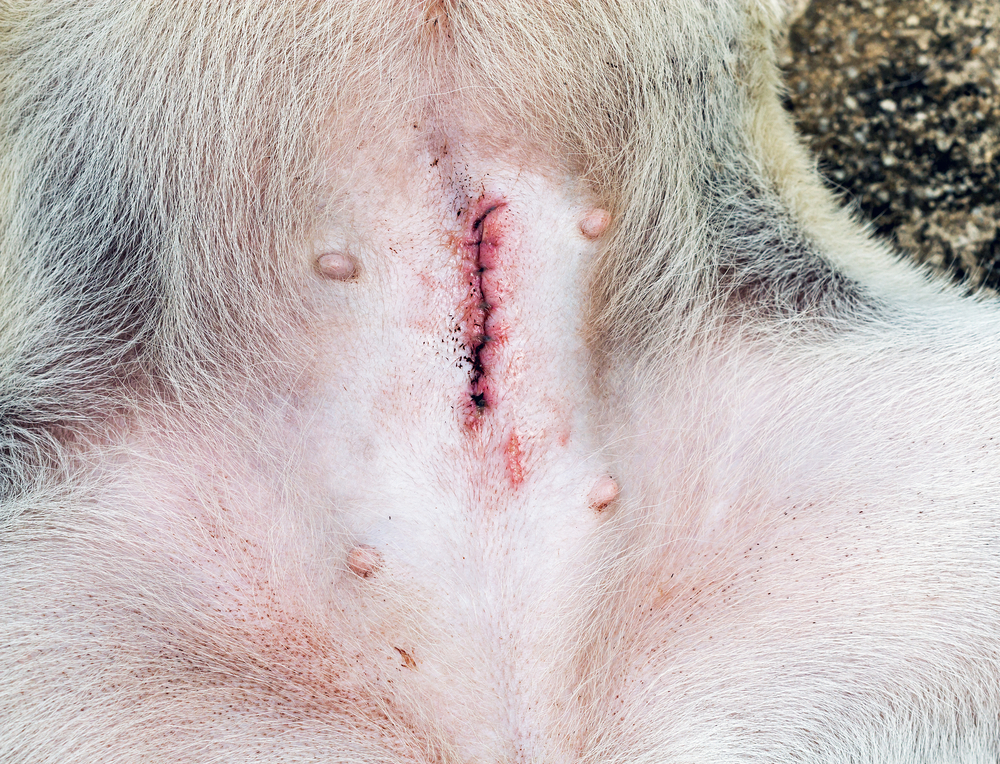

In the course of the first few days, it’s fairly regular for the perimeters of the wound to look a bit pink and infected.
BOLO:
- Swelling – the sutures (stitches) shouldn’t be digging into the pores and skin
- Ache – the wound could also be tender, however shouldn’t be excessively painful
- Discharge – there could also be a small quantity of blood-tinged fluid from the wound, however there shouldn’t be a lot recent blood or pus
Day 4-7: Proliferation
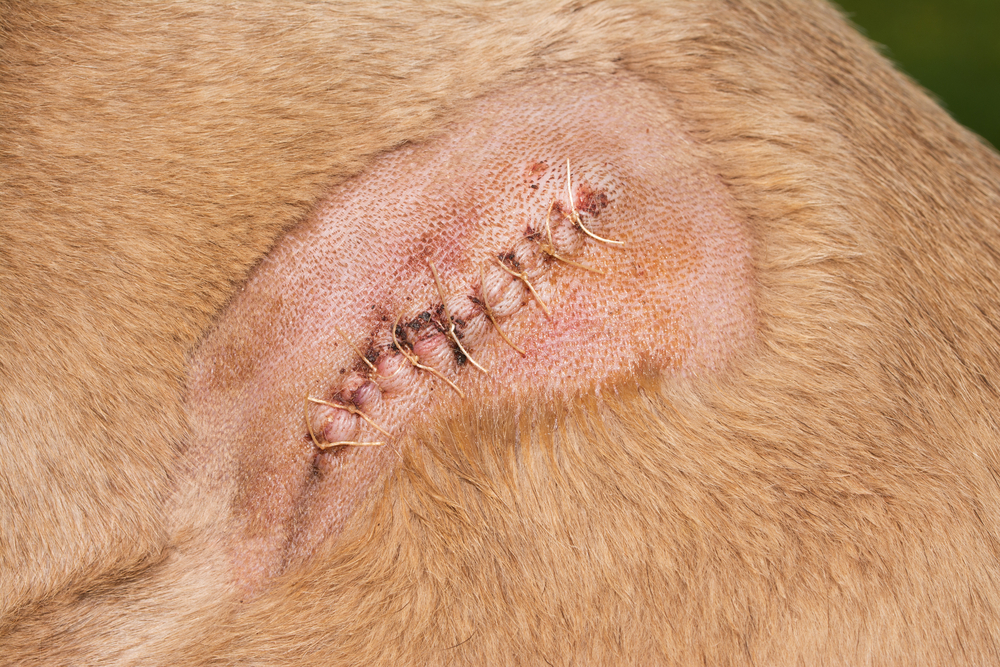

That is when your canine would possibly discover the wound itchy or irritating, as energetic therapeutic begins, and shaved hair begins to develop again.
BOLO:
- Licking, scratching, chewing
- Wound or sutures pulling aside
- Massive swellings alongside the incision line
Day 7 → : Transforming
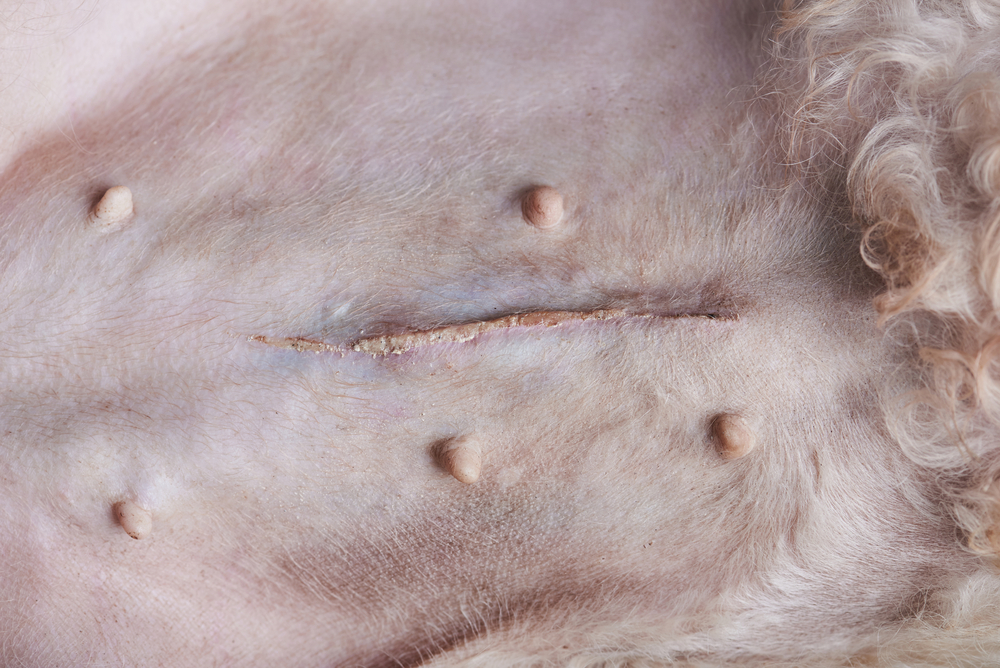

That is the stage the place the sutures are not wanted, though we often depart them in for an additional 5-7 days to be secure. You must be capable to put mild stress on the wound with none discomfort, and the incision needs to be knitted collectively.


Frequent Surgical Wound Problems
Wound Breakdown
Also called wound dehiscence, that is the partial or whole failure of wound closure. It may occur for a lot of causes, similar to an infection, failure of sutures, or an excessive amount of working round. The remedy will depend upon the place the dehiscence has occurred, how massive it’s, and what stage of therapeutic the wound is at.
Inner wound dehiscence will virtually definitely require surgical procedure, whereas a breakdown of the pores and skin incision could be handled with a dressing, pores and skin staple, or by utterly re-closing the wound.
Seroma
A standard complication of surgical procedure, notably on stomach wounds or the place a big mass or tumor has been eliminated. A seroma is a group of inflammatory fluid that has rushed to the incision website to assist heal the wound. Usually, relaxation and anti inflammatory medicine will see the seroma resolve by itself, however they sometimes have to be drained.
An infection
Publish-operative infections aren’t as frequent as you would possibly anticipate, on condition that canine will not be essentially probably the most fastidiously clear of creatures! However, they do occur and have to be handled rapidly. In case your canine’s wound is purple, heat, or swollen, or if there’s a pink, yellow, or creamy discharge, name your vet immediately.
Suture Reactions
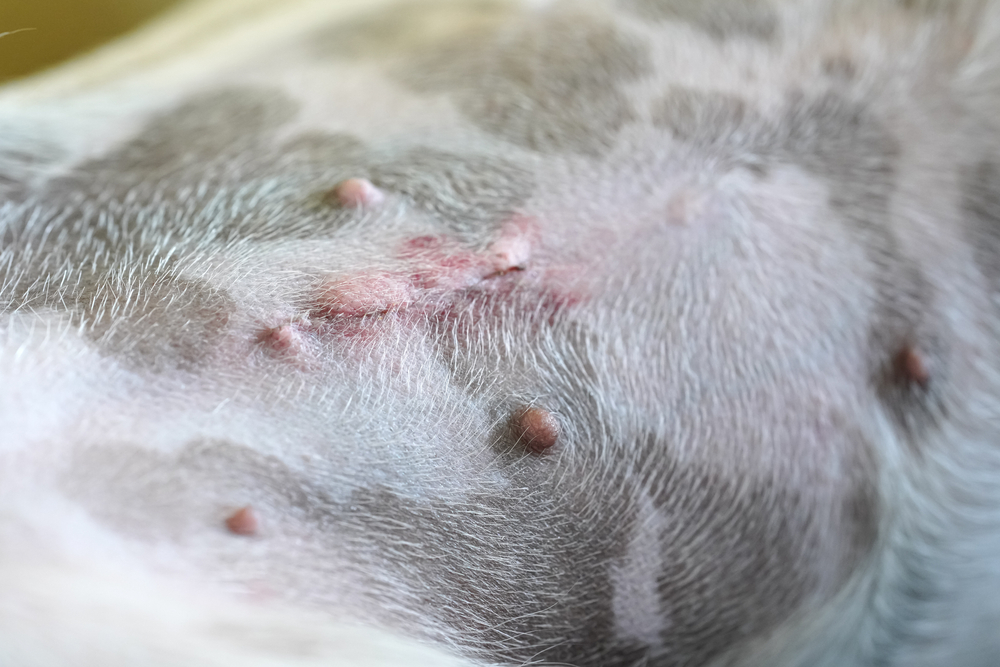

Suture materials has come a good distance since catgut was the mainstay of wound closure. Even so, some people can be extra delicate to suture materials, which may end up in irritation across the incision and lumps/bumps forming alongside the suture line, which can be fairly gentle or extreme. This typically happens in the course of the proliferation stage of therapeutic. At all times test along with your vet in case you are nervous about any swelling in your canine’s wound, however it’s not unusual for small, painless bumps to look while the incision is therapeutic.


Regularly Requested Questions
Ought to I Clear The Wound?
Except particularly directed to by your vet, you shouldn’t must clear your canine’s surgical incision. A small quantity of crusted blood or scabbing is regular, and it’s higher to go away these in place quite than danger contaminating the wound or disrupting therapeutic by making an attempt to choose them off.
In case your canine’s wound turns into soiled, the very best factor to do is dip some cotton wool in sterile saline or cooled boiled water (no want for it to be salty), squeeze out extra water, and gently dab the pores and skin across the wound. Keep away from touching the incision itself.
Keep in mind, your canine could be fairly tender, so it’s a good suggestion to strategy the wound slowly, utilizing a few ‘heat up’ items of cotton wool to work your manner nearer to the wound, earlier than utilizing a recent piece to scrub across the incision.
How Usually Do I Want To Go Again For A Examine-up?
It will very a lot depend upon the age and well being of your canine, and the kind of surgical procedure they’ve had. For routine procedures like a spay or castration, most vets will suggest a post-op test after 3 and seven days, with sutures being eliminated after 14, however each vet and follow is totally different.
Most significantly, in case you are nervous about your canine’s wound or another facet of your canine’s restoration, don’t wait on your subsequent appointment; contact your vet immediately. In case your vet is unavailable, there are at all times on-line veterinary companies that may help you.
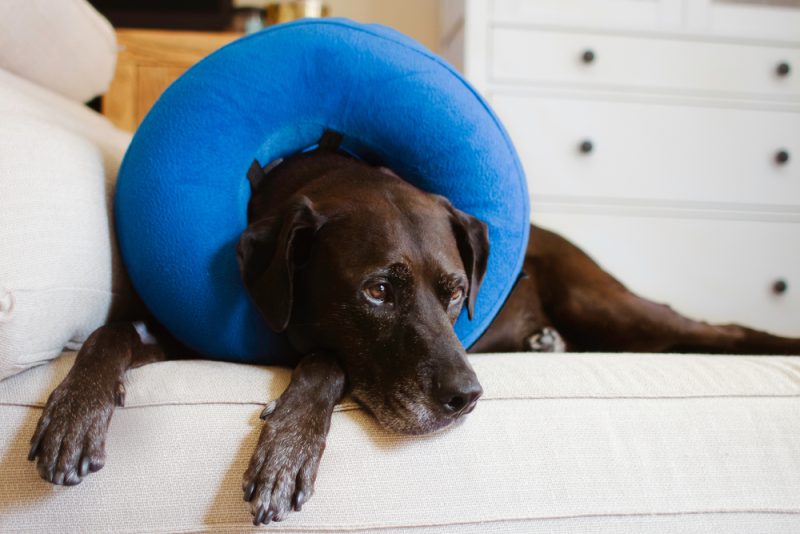

How Lengthy Does It Take For Dissolvable Sutures To Dissolve?
Completely different suture materials sorts are designed to last more than others, relying on the job they’re doing, and they’re designed to have a minimal period of time earlier than they begin to break down. For instance, suture supplies utilized in stitching up intestines will begin to break down after a few weeks, because the tissue heals rapidly, and we don’t need suture materials to trigger an issue. Within the deepest muscular layer of the stomach, the suture materials used received’t begin to break down for at the very least 4-6 weeks, whereas the fabric utilized in intradermal sutures breaks down after 2-3 weeks. Nonetheless, how lengthy some suture materials lasts can range, and it isn’t unusual to nonetheless really feel suture materials within the deepest layer of a spay scar many months after the surgical procedure!
Ought to I Cowl The Wound With Ointment?
By no means put any ointments, gels, or lotions on a surgical incision until particularly instructed to by your vet. Most pores and skin preparations for people will not be appropriate for canine pores and skin and can do extra hurt than good.


Remaining Ideas
Hopefully, you’re feeling extra ready than ever to watch your canine after surgical procedure. Usually, probably the most difficult a part of a canine’s surgical restoration is making an attempt to cease them from working round inside a day or two! This can be very essential to make use of any collars or fits to stop your canine from licking or scratching their wound, even when they’re not a fan of their new style accent. It is much better to have a canine that resents their surgical collar than one that should have one other surgical procedure.
Your vet would at all times favor to look at your canine and even take a look at a photograph than have you ever worrying about your canine’s wound and never getting in contact, so don’t hesitate to name them in case you’re in any respect nervous.
Featured Picture Credit score: DyziO, Shutterstock
[ad_2]





